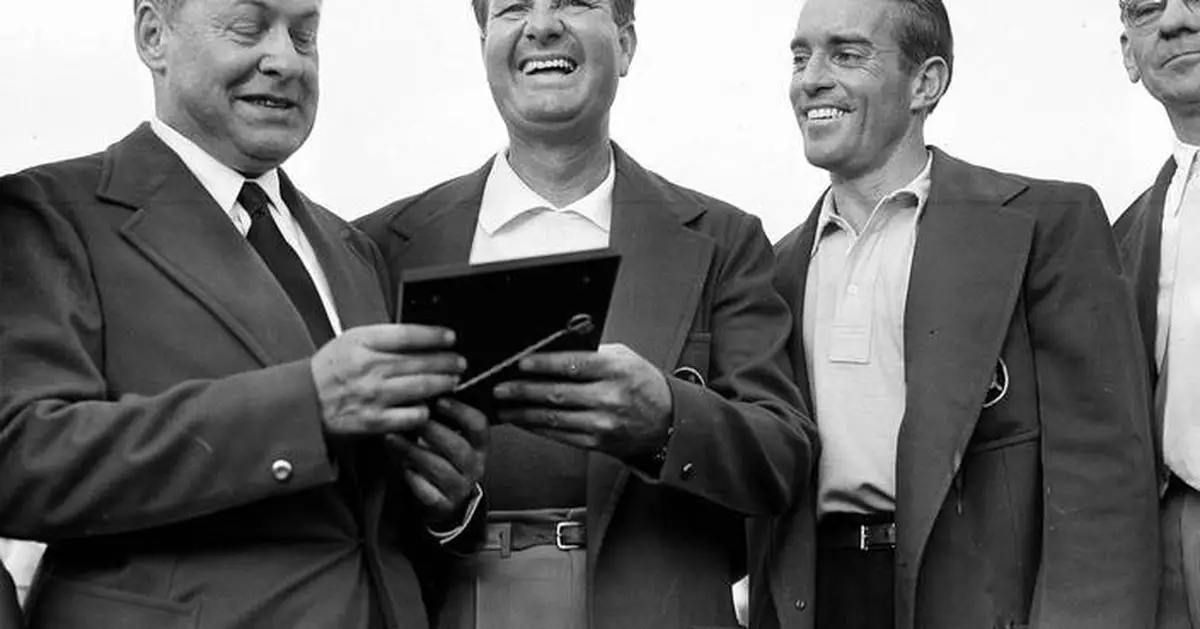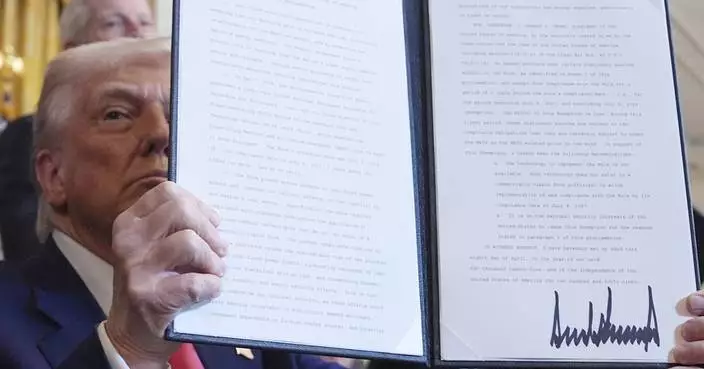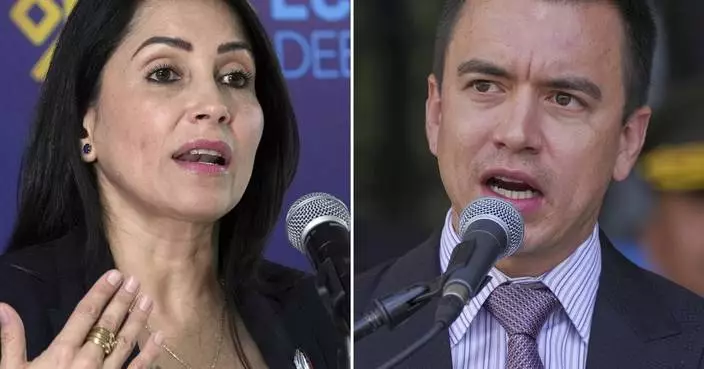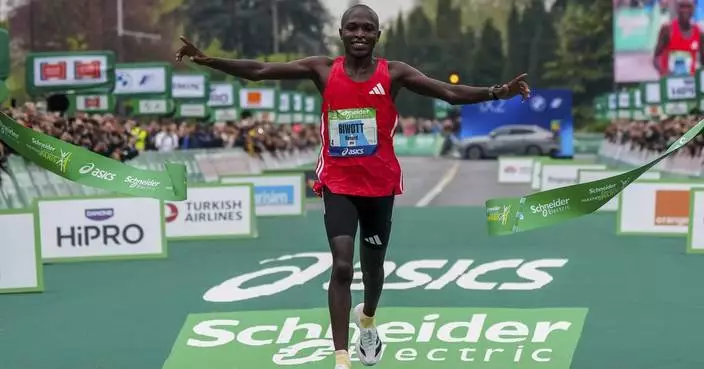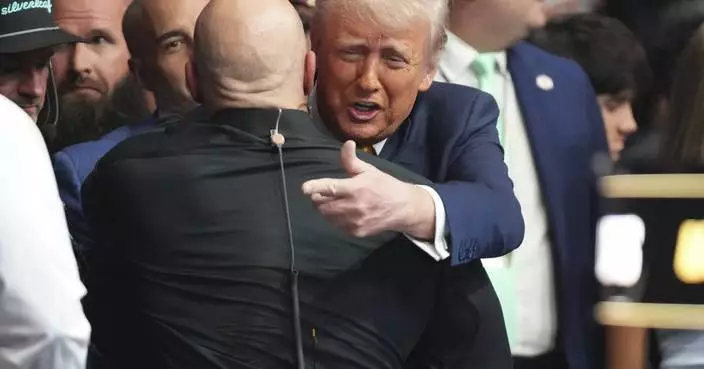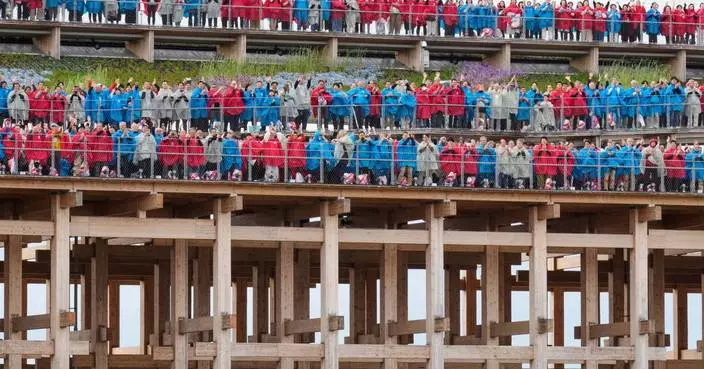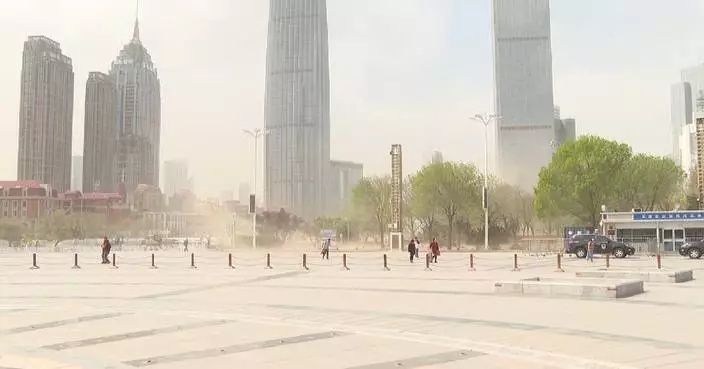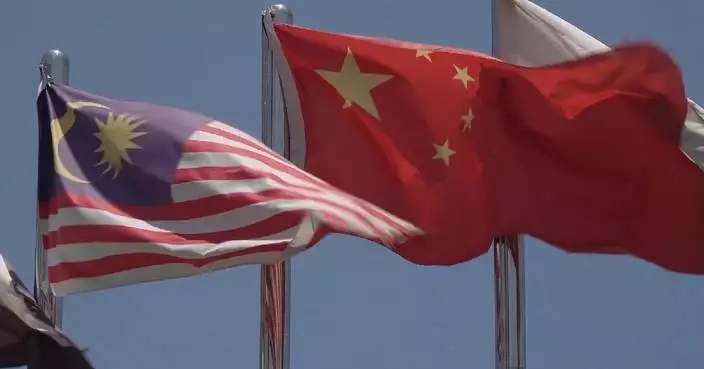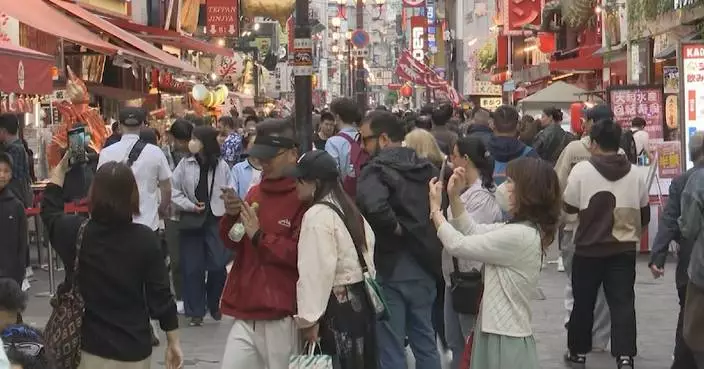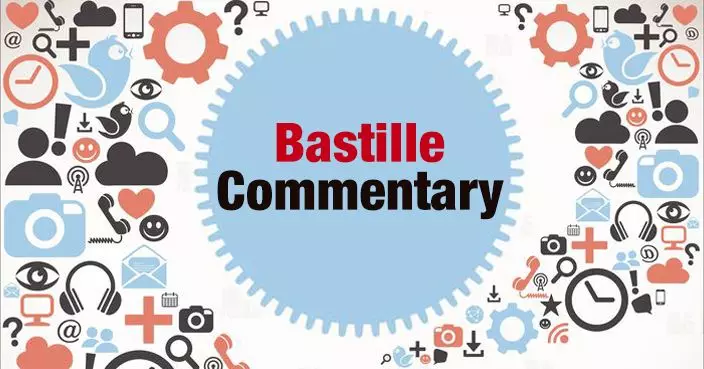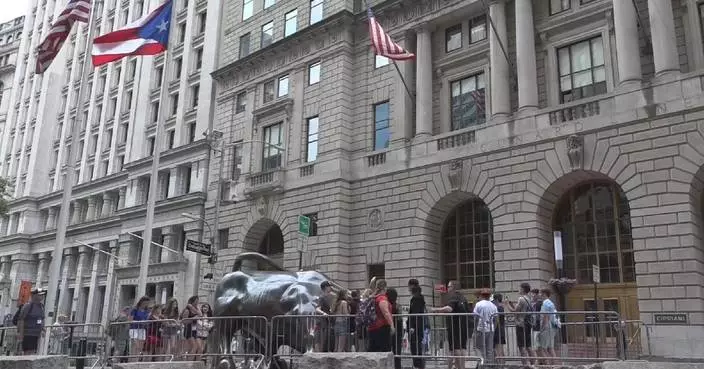AUGUSTA, Ga. (AP) — A look at some of the anniversaries this year at the Masters based on The Associated Press account of those victories:
Jimmy Demaret won his third, and record-breaking, Masters golf tournament today after Jim Ferrier had the title in his grasp and threw it away. Playing golf as sensational as his Easter garb, Jimmy shot the final round in 69 strokes, three under par, for a 72-hole total of 283. Ferrier, who started the day with a two-stroke lead over the field and four over Demaret, lost it all on the last six holes. ... He went over on five of the next six to finish two strokes behind the new champion. Ben Hogan, regarded as Ferrier’s most serious challenger when the final round began, couldn’t hold the pace, finishing with a 76 for 288.
Jack Nicklaus stood on the 16th hole, Augusta’s par-3 Red Bud hole, looking at a 40-foot sidehill putt. His ears were still ringing from the cheers of thousands lining the long par-5 No. 15 behind him where Tom Weiskopf had just knocked home a 12-footer for a birdie that sent him into the lead. “Sometimes you get a feeling about these things,” Nicklaus said. “I thought I could make the putt.” Weiskopf, momentarily shaken, left his 5-iron tee shot 80 feet short on No. 16 and watch his approach putt roll left, still 18 feet away. He bogeyed and there was a two-shot shift in those dying moments of one of the great golf tournaments ever played. Nicklaus emerged the winner with an unprecedented fifth Masters title.
The last leg of Vijay Singh’s improbable journey was an uphill climb to the 18th green at Augusta National. That was the easy part. The Fiji native had toiled in the jungle, pounding balls in stifling heat and wondering where it all might lead. He found out Sunday when he slipped the green jacket over his broad shoulders. Singh beat back the biggest stars in golf to claim its most prestigious prize. He stared down a challenge from David Duval, ignored an early charge by Tiger Woods, and calmly held off Ernie Els at the end.
The ball scooted up the slope and crawled down toward the hole. There, for two agonizing seconds, it hung on the edge before disappearing into the cup. A shot for the ages, sheer magic from Tiger Woods’ glorious past in the Masters. Just as stunning as that chip was the mess that followed — shots into the trees and the sand, a rare collapse by the greatest closer in golf on the verge of blowing a final-round lead in a major for the first time. The one thing that looked familiar, finally, was Woods wearing a green jacket. But he kept a breathless gallery guessing to the very end, when he delivered his best two shots under stifling pressure and made a 15-foot birdie putt to beat Chris DiMarco in a playoff to win his fourth Masters.
Jordan Spieth tapped in his final putt to cap off a record performance and bent over in relief. He just as easily could have been taking a bow. This was a Masters for the ages. Not since Tiger Woods in 1997 has a 21-year-old faced so little stress while making a mockery of par in a major. Not since Raymond Floyd in 1976 has anyone withstood the pressure of leading for all four rounds at Augusta National. Only one other Masters champion — Craig Wood in 1941 — has never let anyone closer to him than three shots the entire way. Spieth took his place among the best in the game Sunday when he closed with a 2-under 70 for a four-shot victory over Phil Mickelson and Justin Rose, becoming the second-youngest champion behind Woods to wear a green jacket.
In this one-of-a-kind Masters that had no fans and no roars, Dustin Johnson made sure it had no drama. And when he polished off his five-shot victory Sunday with lowest score in tournament history, he had no words. Only tears. Looking smart in his Masters green jacket he dreamed his whole life of winning, Johnson spoke to a small gathering on the putting green in absence of the official ceremony, but only briefly. In control of every aspect of his game on a course that never allows anyone to relax, he couldn’t speak when it was over. Johnson overcame a nervous start that conjured memories of past majors he failed to finish off, and then delivered a command performance that added his own touch to a Masters unlike another. Because of the COVID-19 pandemic, it was the first played in November. Johnson closed with a 4-under 68 and finished at 20-under 268, breaking by two shots the record set by Tiger Woods in 1997 and matched by Jordan Spieth in 2015.
AP golf: https://apnews.com/hub/golf

FILE - Rory McIlroy, of Northern Ireland, Phil Mickelson , Dustin Johnson and Xander Schaufele play on the 12th green during a practice round for the Masters golf tournament, Nov. 10, 2020, in Augusta, Ga. (AP Photo/Matt Slocum, file)

FILE - Tiger Woods celebrates with his caddie Steve Williams after his chip-in birdie on 16th hole during the 2005 Masters at the Augusta National Golf Club in Augusta, Ga., April 10, 2005. (AP Photo/Elise Amendola, file)

FILE - Jack Nicklaus as he makes a birdie putt on the 16th hole, April 13, 1975 at Augusta, Ga. (AP Photo, file)
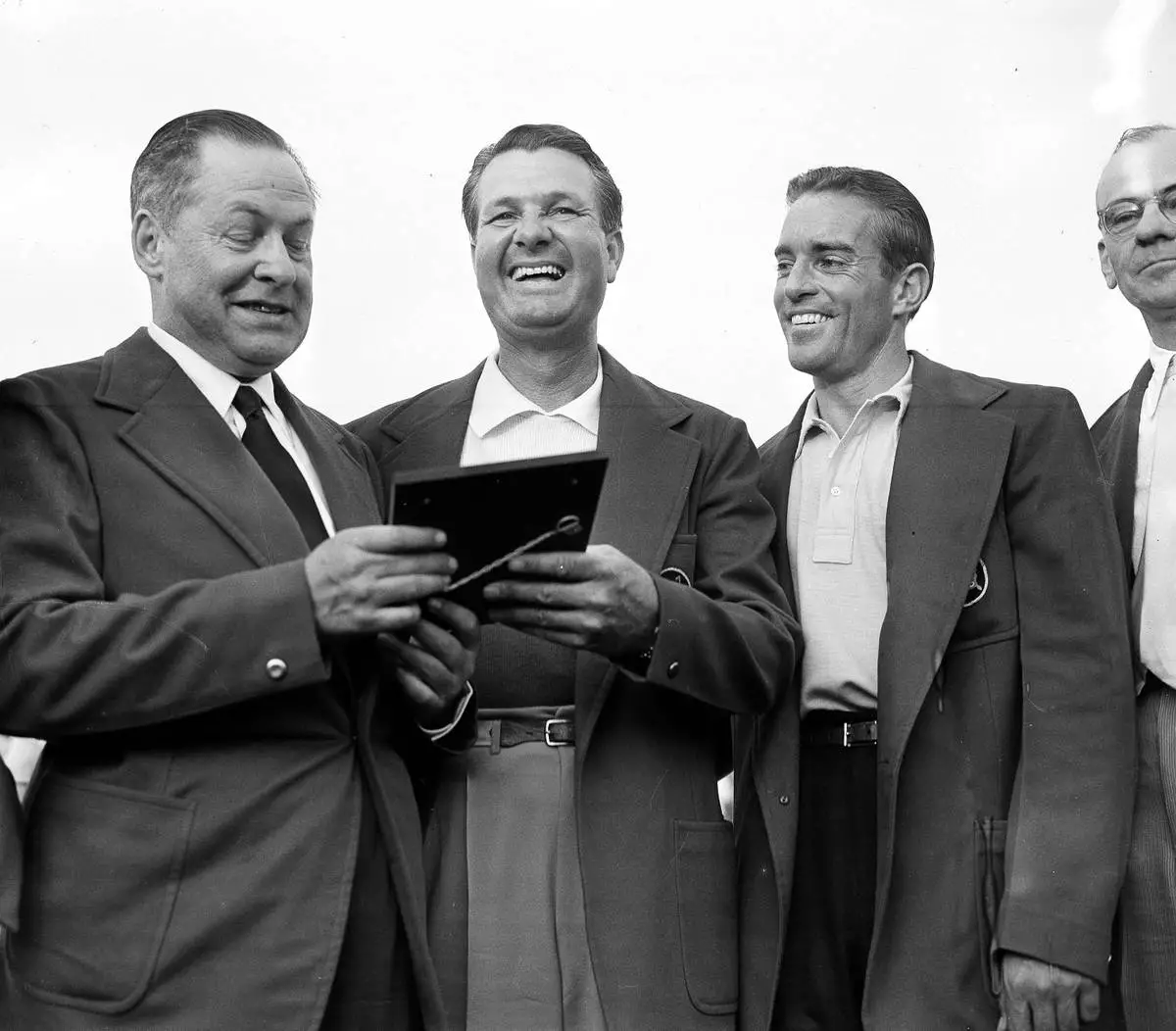
FILE - Bob Jones, president of Augusta National Golf Club, left, presents a plaque to Jimmy Demaret, center, as amateur Frank Stranahan, at right, looks on April 9, 1950 at the Augusta, Ga. (AP Photo, file)
SAN JOSE, Calif. (AP) — Like many in the tech industry, Jeremy Lyons used to think of himself as a relatively apolitical guy.
The only time he had participated in a demonstration before now was in the opening days of Donald Trump’s first presidential term, when he joined fellow Google workers walking out of the company’s Silicon Valley campus to protest immigration restrictions. Google’s co-founder and its chief executive officer joined them.
Last weekend was Lyons' second, also against Trump, but it had a very different feel.
The man directing thousands of marchers with a bullhorn in downtown San Jose on April 5 was another tech worker who would not give his full name for fear of being identified by Trump backers. Marchers were urged not to harass drivers of Tesla vehicles, which have gone from a symbol of Silicon Valley’s environmental futurism to a pro-Trump icon. And no tech executives were anywhere to be seen, only months after several had joined Trump at his January inauguration.
To Lyons, 54, the change says as much about what’s happened to Silicon Valley over the past quarter-century as it does about the atmosphere of fear surrounding many Trump critics nowadays.
“One of the things I’ve seen over that time is a shift from a nerdy utopia to a money first, move fast and break things,” Lyons said.
The tech industry's political allegiances remain divided. But as some in the upper echelons of Silicon Valley began shifting to the right politically, many of the tech industry’s everyday workers have remained liberal — but also increasingly nervous and disillusioned. Their mood is in stark contrast to the prominent tech leaders who have embraced a conservative populist ideology.
“I think you're seeing a real gap between the leadership elite here in Silicon Valley and their workforce,” said Ann Skeet, who helps run a center at Santa Clara University studying the ethics of the tech industry.
“The shift hasn’t been for a lot of people,” said Lenny Siegel, a former mayor of Mountain View and longtime liberal activist in the valley. “It’s a handful of people who’ve gotten the attention.”
The biggest example of that is Elon Musk, the world’s richest person and CEO of the world’s best-known electric car company who has taken on a prominent role slashing federal agencies in Trump's administration. Musk has been joined by several tech billionaires, including investor David Sacks, who helped fundraise for Trump's campaign and became the White House’s artificial intelligence and cryptocurrency czar, and venture capitalist Marc Andreesen. Google CEO Sundar Pichai and Meta CEO Mark Zuckerberg also attended Trump's inauguration in Washington.
Zuckerberg began praising Trump after the then-candidate, angered over money Zuckerberg steered toward local election offices in some states in 2020 during the coronavirus pandemic, threatened last summer to imprison him. Zuckerberg also donated $1 million to the president's inauguration fund and co-hosted an inauguration reception for billionaire Republican donors.
Trump has filled a number of his administration's posts with billionaires and his support from wealthy tech leaders led Democratic President Joe Biden to warn that the United States risked becoming an oligarchy ruled by elites. During Trump's first term, the valley and its leaders were a bulwark of resistance to the Republican, especially over immigration, given that the industry draws its workforce from around the globe.
It's against that backdrop that thousands of people attended the recent rally at a downtown San Jose park to protest the actions of Trump and Musk.
Santa Clara County, which comprises most of Silicon Valley, swung 8 percentage points toward Trump in November election against Democrat Kamala Harris, matching the shift across California. Even with that swing, the county voted 68% to 28% for the then-vice president and remains a Democratic stronghold.
“We’re still in the belly of the beast,” said Dave Johnson, the new executive director of the Santa Clara GOP, who said the party has gained some new members in the county but few from the tech industry. “If the lake was frozen, there’s a little glimmer on top. I would not say there are cracks in the ice.”
The valley has long leaned Democratic, but with an unusual political mix: a general dislike of getting too involved in Washington’s business coupled with an at-times contradictory mix of libertarian individualism, Bay Area activism and belief in the ability of science to solve the world’s problems.
That has persisted even as the tech industry has changed.
The tech boom was fueled by scrappy startups that catered to their workers’ dreams of changing the world for the better. Google’s motto was “don’t be evil,” a phrase it removed from its code of conduct by 2018, when it and other companies such as Meta, which owns Facebook and Instagram, had grown into multinational behemoths. The companies have had layoffs in recent years, a shock to an industry that not long ago seemed poised for unlimited growth.
Entrepreneurs once dreamed of building startups that would change the world, said Jan English-Lueck, a San Jose State University professor who has been studying Silicon Valley culture for more than 20 years.
“Now,” she said, “if you’re part of a startup, you’re hoping you’ll be absorbed in a way that’s profitable.”
Even before some prominent tech leaders shifted toward Trump, there was mounting discontent among some in the industry over its direction. IdaRose Sylvester runs a business promoting a Silicon Valley-style approach to entrepreneurs in other countries.
“I feel sick to my stomach now,” she said.
Sylvester was already disenchanted with the growing inequality in the valley and the environmental cost of all the energy needed to power crypto, AI and data centers. She took part in protests against Trump in 2017, but felt that energy fade once he lost the 2020 election to Biden.
“I saw a lot of people get out of politics once Biden won. There was a feeling it was all OK,” Sylvester said. “It was not all OK.”
It is worse now, she said. She helped organize one of several demonstrations across the valley last weekend during a national day of protests against the new administration.
At first glance, the one in downtown San Jose could have been a typical anti-Trump protest anywhere. A large crowd of largely middle-age and older people carried signs against the president and Musk while chanting against oligarchs.
But it was clearly a Silicon Valley crowd, one still reeling not only from Trump’s challenges to the country’s system of checks and balances but also from the actions of the valley’s top executives.
“The money is all shifting to the wealthiest, and that terrifies me,” said Dianne Wood, who works at a startup. “Unfortunately, you’ve got the Zuckerbergs and Elon Musks of the world who are taking that over.”
“Just coming here, everyone’s saying turn off the facial recognition on your phone,” Wood added. “We’re all scared.”
Kamal Ali, who works in AI, said he felt betrayed by that shift.
“The trust is broken. A lot of employees are very upset by what's going on," he said. "It's going to be different forever.”
Associated Press writer Sarah Parvini in Los Angeles and video journalist Haven Daley contributed to this report.
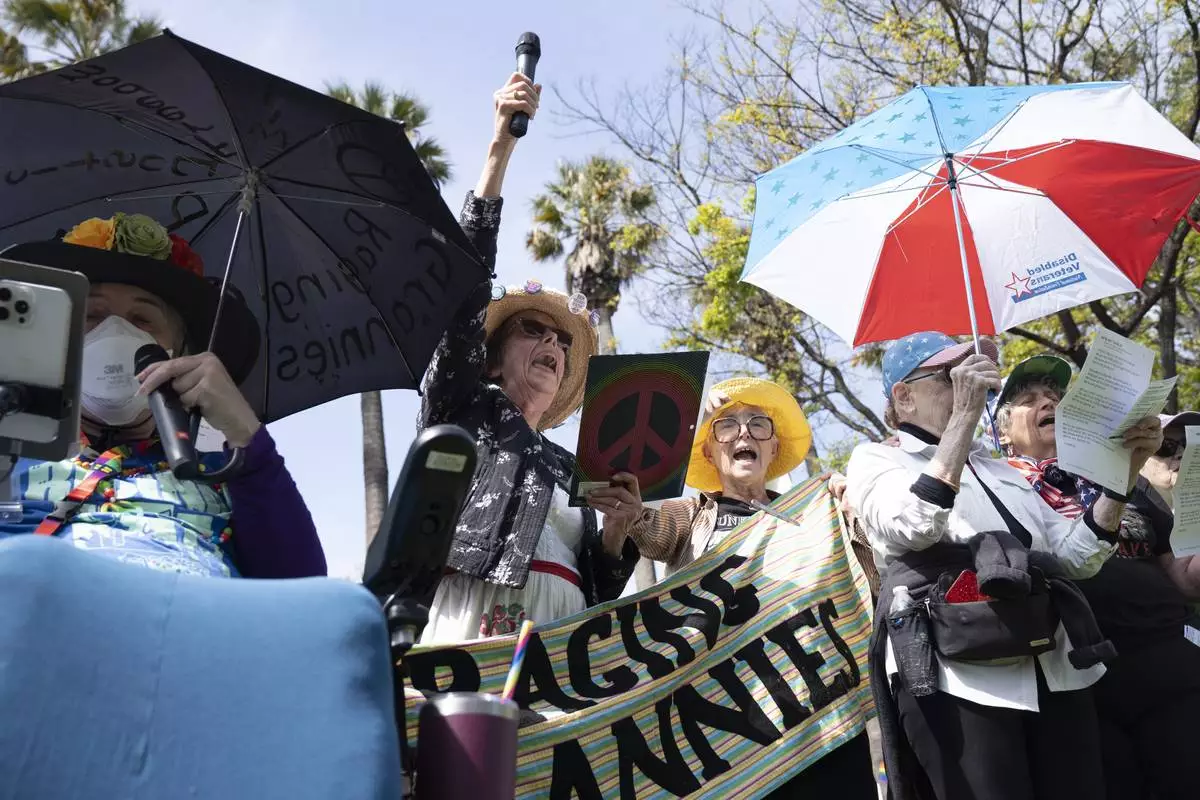
Demonstrators sing a song of protest at a rally against President Donald Trump and Tesla CEO Elon Musk in San Jose, Calif., as part of a national day of action on Saturday, April 5, 2025. (AP Photo/Emily Steinberger)
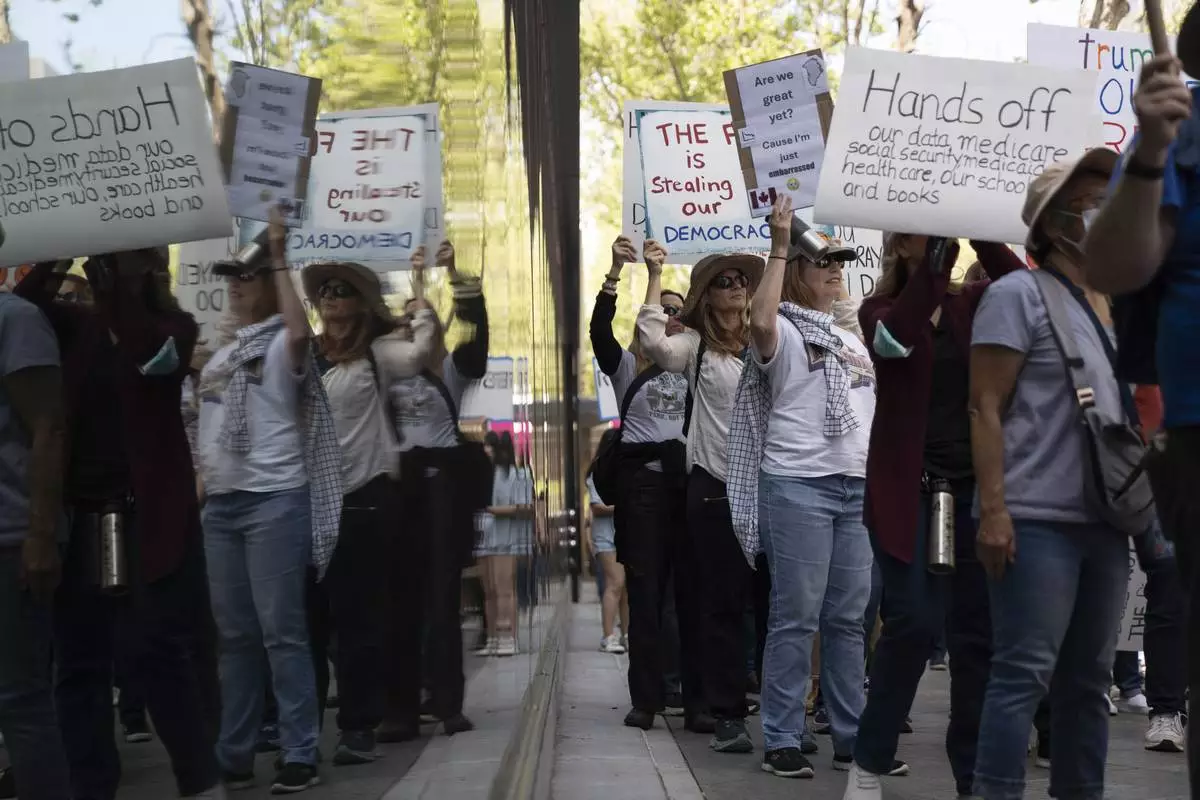
Demonstrators rally against President Donald Trump and Tesla CEO Elon Musk in San Jose, Calif., on Saturday, April 5, 2025, as part of the nationwide "Hands Off!" protest. (AP Photo/Emily Steinberger)
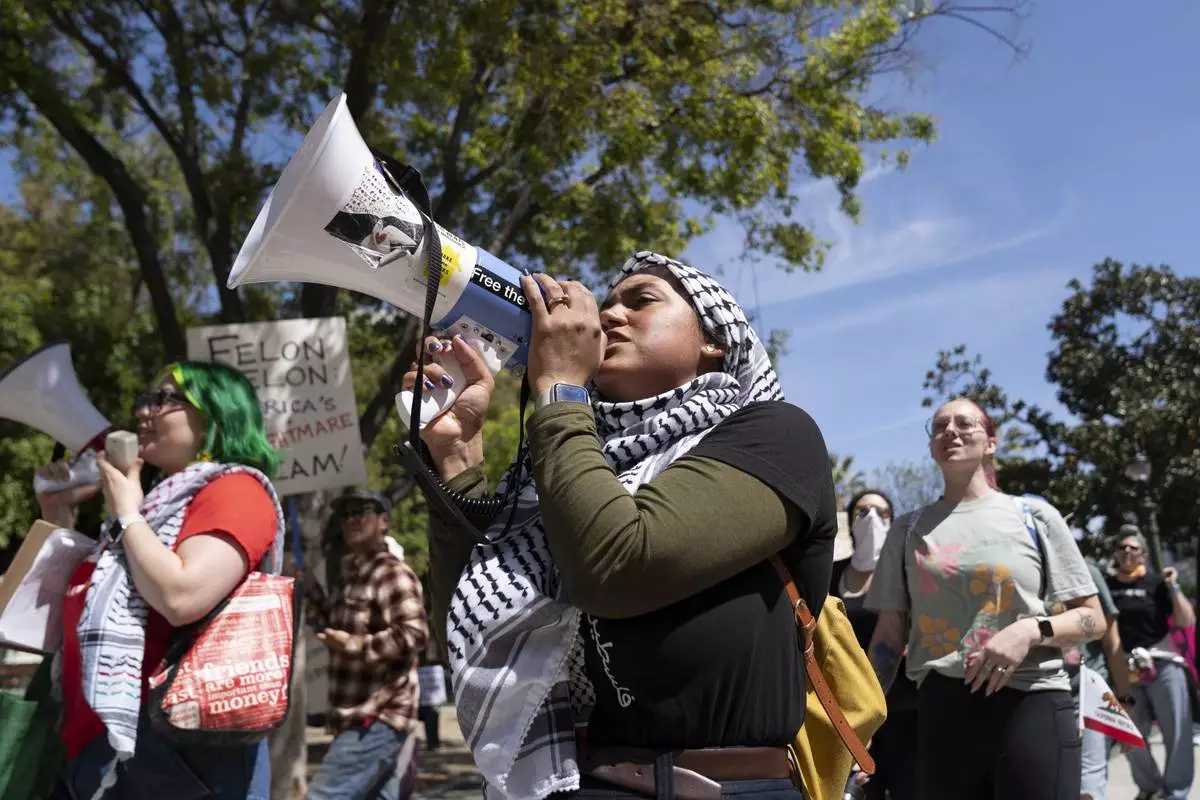
Michelle Parvool chants into a megaphone at a rally against President Donald Trump and Tesla CEO Elon Musk in San Jose, Calif., on Saturday, April 5, 2025, as part of the nationwide "Hands Off!" protest. (AP Photo/Emily Steinberger)
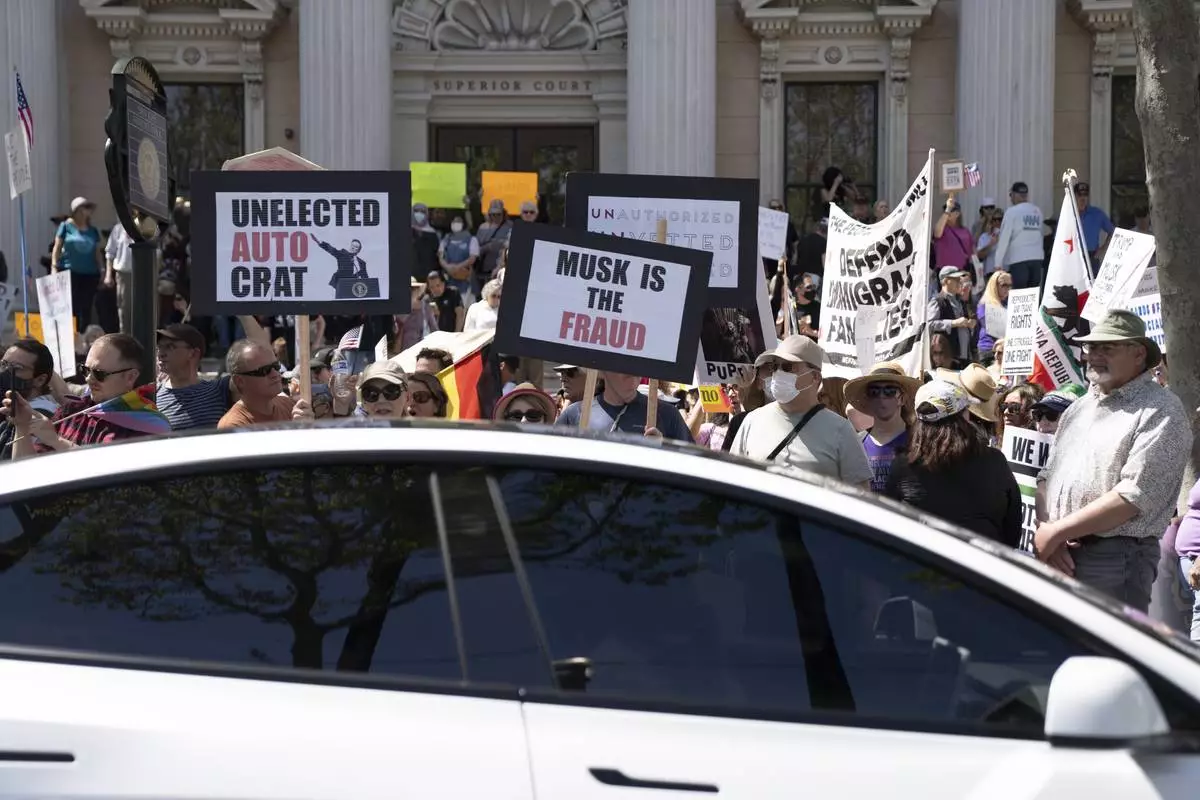
A Tesla vehicle drives past demonstrators during a rally against President Donald Trump and Tesla CEO Elon Musk in San Jose, Calif., on Saturday, April 5, 2025, as part of the nationwide "Hands Off!" protest. (AP Photo/Emily Steinberger)
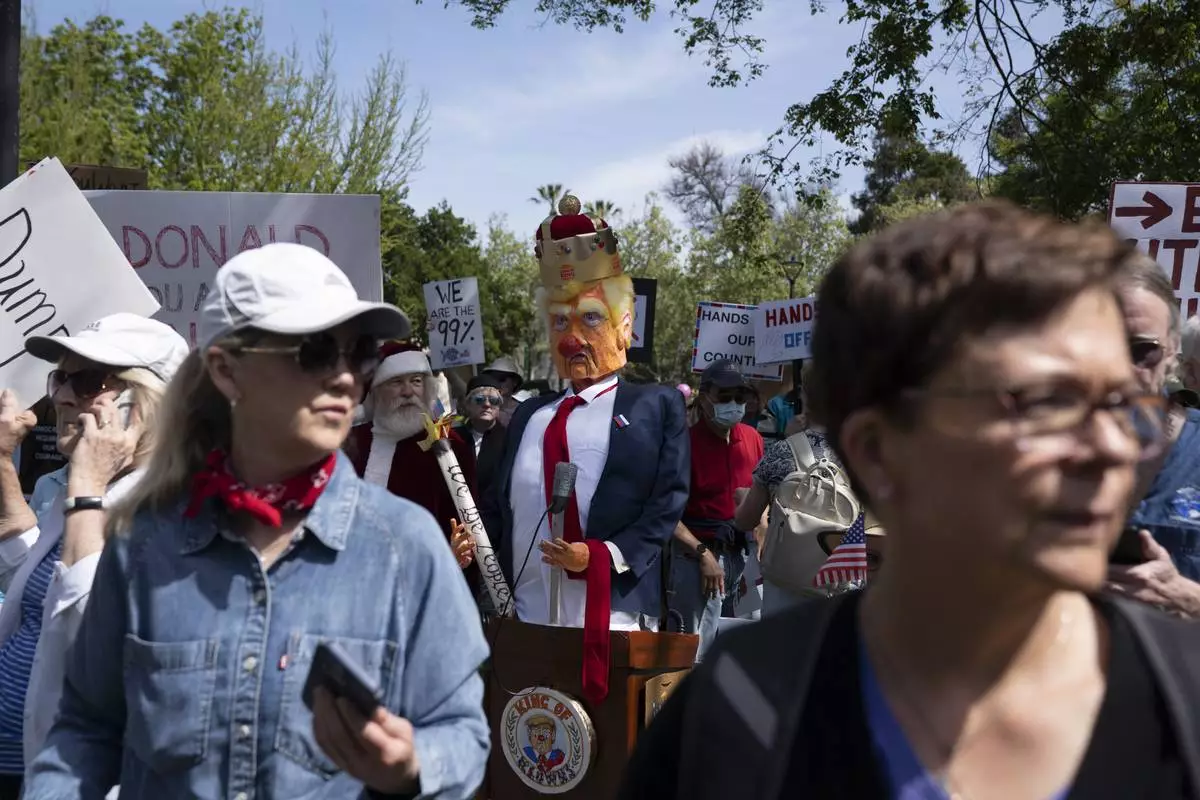
Demonstrators rally against President Donald Trump and Tesla CEO Elon Musk in San Jose, Calif., as part of a national day of action on Saturday, April 5, 2025. (AP Photo/Emily Steinberger)
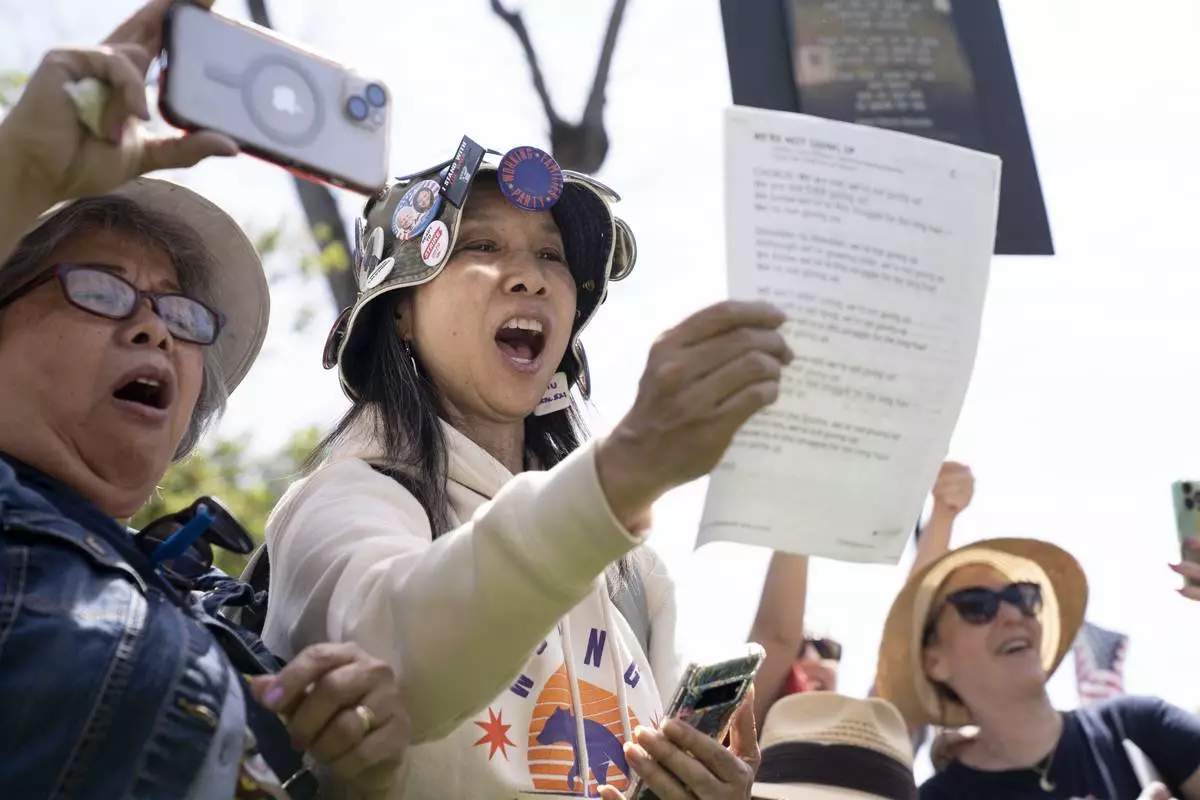
Connie Chew, right, and Aggie Goltiao, left, sing a song of protest at a rally against President Donald Trump and Tesla CEO Elon Musk in San Jose, Calif., as part of a national day of action on Saturday, April 5, 2025. (AP Photo/Emily Steinberger)
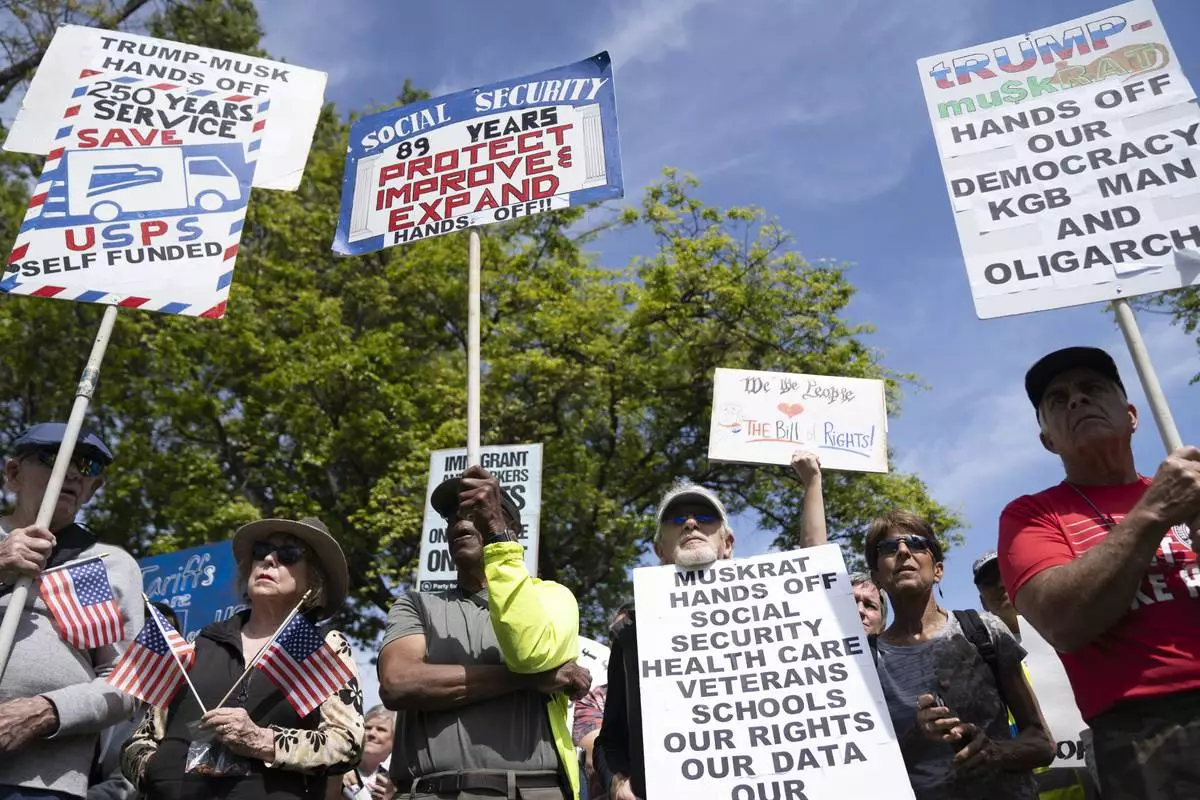
Demonstrators rally against President Donald Trump and Tesla CEO Elon Musk in San Jose, Calif., as part of a national day of action on Saturday, April 5, 2025. (AP Photo/Emily Steinberger)






